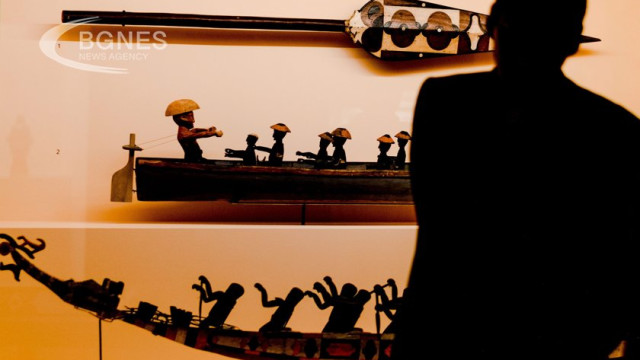Germany and France will jointly spend €2.1 million to further investigate the origins of African heritage items in their national museum collections, which could pave the way for their eventual return, the Guardian reported.
A three-year fund was launched in Berlin, in which each country will contribute 360,000 euros per year. The fund is intended to finance research on subjects from anywhere in sub-Saharan Africa, although priority is expected to be given to countries that were colonized by France and Germany, such as Togo and Cameroon.
"This is an experimental fund," said Dr. Julie Siscia, a researcher at the Marc Bloch Center, a Franco-German research center in Berlin, which will manage the funds.
"We are launching it with the broadest possible criteria, so that both small and the largest projects can apply. The only requirement is that the projects be led by mixed French and German teams from the world of academia and museums," she said .
The pan-European debate on the return of African cultural heritage was set in motion when French President Emmanuel Macron announced in 2017 that he would "do everything possible" to return some of Africa's cultural heritage looted by France.
In 2021, France returned 26 artifacts to Benin, but its efforts have stalled in recent years. A law on the restitution of cultural property seized abroad, which was due to pass through parliament at the end of 2023, has been blocked by the opposition.
Since then, the restitution project in Germany has been gaining momentum. In November 2022, a German foundation funded the launch of the first comprehensive database of the artifacts known collectively as the Benin Bronze Objects, and a year later the German Foreign Minister returned 21 bronze objects to Nigeria.
These artifacts were originally looted by British forces. In contrast, dealing with items that had once been taken from Germany's own colonies presented a significantly greater challenge, both administratively and diplomatically.
Originally colonized by Imperial Germany in the late 19th century, Cameroon was conquered and divided into administrative zones by Great Britain and France after the outbreak of the First World War. Most cultural values of Cameroonian heritage stored in European museums were taken during the German colonial rule.
A project to map Cameroonian heritage objects held in German museums, published in June last year under the title Atlas of Absences, identified more than 40,000 objects, of which only 8,871 are held at the Linden Museum in Stuttgart.
Among the most famous items of Cameroonian heritage is the Mandu Yenu, a colorful throne richly decorated with pearls and shells, which is believed to have been presented to the German Emperor Wilhelm II by King Njoya of the Kingdom of Bamum in 1908 and which is on display in The Humboldt Forum in Berlin.
Some items seized by German forces were sold to collections in France, such as the so-called Queen Bangwa - a wooden sculpture from the Grassfields region of Cameroon that was photographed by American artist Man Ray in 1934 and was exhibited at the now closed Musée Dapper in Paris until 2017.
"The launch of the program shows that cooperation - cross-border and between science and culture - makes important projects like this possible and is very necessary in difficult times like the present," said Claudia Roth, Germany's Federal Commissioner for Culture and Media, at the launch of the Franco-German project./BGNES



.jpg)
.jpeg)


